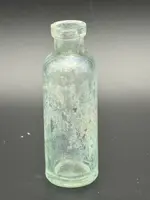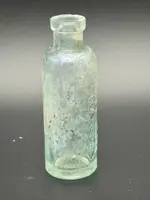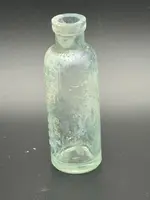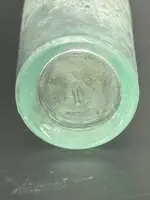- #1
Thread Owner
Bottle Vitals
| Date | Color | Shape | Size (Height x Diameter) | Value* | |
| Dr. Kilmer's Swamp Root Kidney Cure | 1880s | Aqua | Round cylindrical | 3" x 1" | $15.00 |
Bottle Views (click to enlarge):
Modern medicine men routinely scour the Amazon looking for new medicinal plants and herbs that may one day cure our most horrible diseases. More than a century ago, they were doing the same thing -- in the swamp.
Doctor Sylvester Kilmer was one such medicine man, in Binghamton, New York. In the early 1870's, he began marketing his Swamp Root Kidney Cure. Like many patent medicines of the period, this one was a collection of herbal extracts in a serum composed with alcohol as one of the main ingredients. Dr. Kilmer was quite serious about its curative powers and was more interested in helping the sick than in making a buck, apparently.
He did advertise and built a successful business with this and other cures, but it wasn't until his brother Jonas and Jonas's son Willis took over that things really took off. By the early 1900s, they had built it into a very large business and made Swamp Root a household name. Here's their shiny laboratory, then and now.
Swamp root was so successful, that apparently someone once asked Willis what Swamp Root was good for, and he quipped "about a million dollars a year".
I must admit, I might be tempted to take a dose or two myself if I had a bad case of "internal slime-fever". It sounds pretty awful.
Here's a whole page telling how great it was for some folks in Boston (click to enlarge):

But apparently some of that success was based on some false advertising, attributing things to Doctor Kilmer that he didn't actually do. He wound up taking the company's new owners to court for false advertising and won initially, but then was overturned on appeal.
This bottle is from the 1880s. It's a sample size, and even says so right on the bottle. Here's the before and after, just soap and water and brushes to clean.
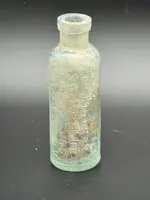
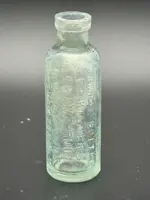
* Value is based on sold eBay listings at the time of posting, and varies considerably with condition.

